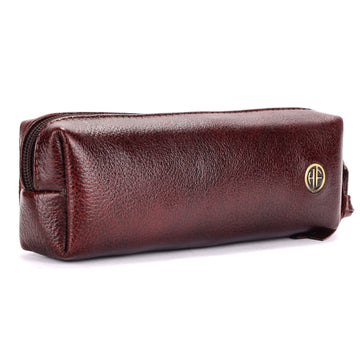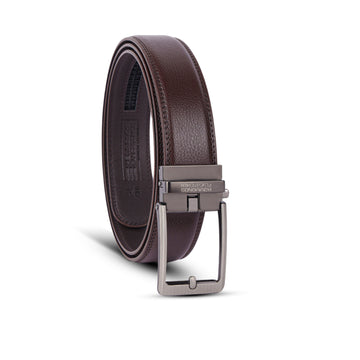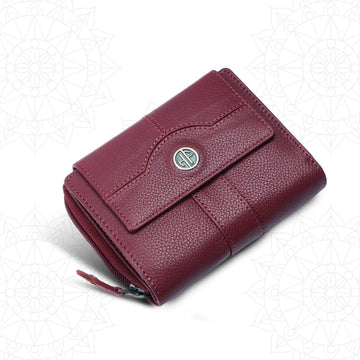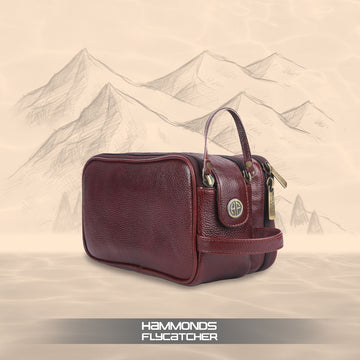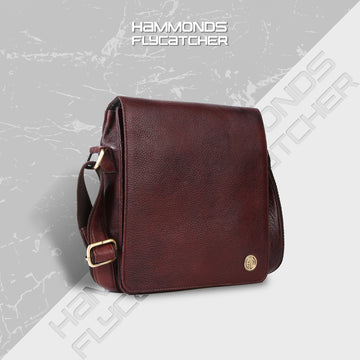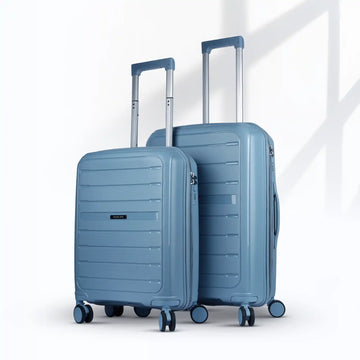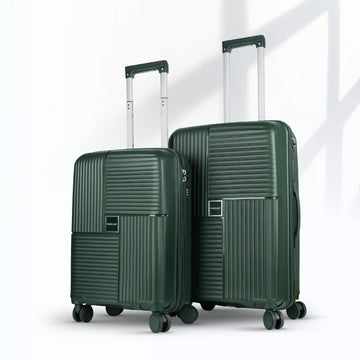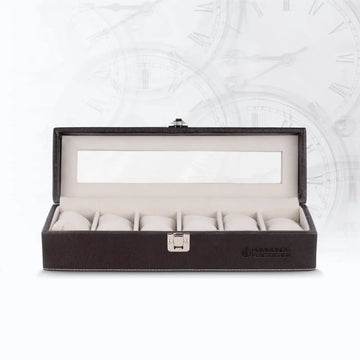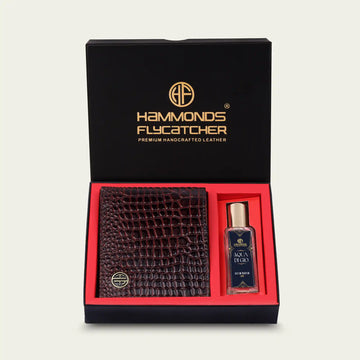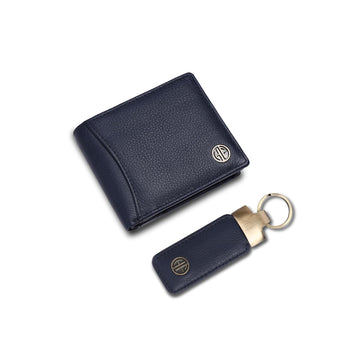Why is Winter Challenging for Leather Products?
Leather is a classic investment. Its sophistication, texture, and strength make it a staple for jackets, bags, wallets, belts, and accessories. However, winter brings out the worst in leather. The combination of cold temperatures, snow, slush, and road salt can strip away oils, fade colors, and even create cracks.
Understanding these challenges is the first step in leather care in winter. Leather is naturally porous. Snow or rain can seep in, leaving water winter salt stains on leather. That’s not all. If the leather dries too quickly due to cold, dry air, cracks appear. This is why leather drying and cracking prevention are critical. Even brief exposure to winter conditions can leave permanent marks.
Salt is another leather’s silent enemy. Winter streets often use salt to melt ice. But there’s a catch here! Salt stains on leather are corrosive, worsening its condition. These stains can strip color, dry out natural oils, and weaken the fibers of leather. Commuters, office-goers, and frequent travelers must pay extra attention to how to protect leather in winter.
Cold weather also reduces flexibility. Belts, wallets, and bags can warp if mishandled. Indoor heating makes things worse. Radiators pull moisture from the air, drying leather indoors. Without proper care, even premium leather suffers.
The durability of leather is reliant on consistent protection. By establishing a routine that involves cleaning, conditioning, and waterproofing, you will safeguard the leather upholstery against potential loss of hydration and moisture.
With proper diligence, your leather can remain soft, supple, and with its original sheen for the season. A few moments spent each day will ensure your strategy for genuine leather winter protection remains effective, and your leather investment will always look sharp and feel good.
Essential Winter Leather Care Routine
Leather care in winter is more than cleaning—it’s a consistent routine. Follow these steps to keep your leather soft, supple, and protected.
Cleaning
The first step is always crucial! Always start with cleaning. Remove dirt, dust, debris, and salt immediately. Use a soft cloth or brush. Avoid detergents—they strip natural oils. For stubborn stains, use a mild leather cleaner. Cleaning is your first step in moisture damage leather prevention.
Conditioning
Conditioning is non-negotiable. Apply a leather conditioner for winter twice a month. Focus on handles, edges, seams, and stress points. Conditioning replenishes oils and maintains flexibility. Heavier creams may be necessary for extremely dry leather or items frequently exposed to snow.
Waterproofing
Snow and rain are unavoidable. Treat your leather with a premium waterproofing leather product to establish a protective layer. Waterproofing sprays are generally effective; however, remember to spot-test on a small sample area before applying them. Be cautious of overapplying; this can cause the leather to darken. Any waterproofing leather product should largely prevent moisture from infiltrating or saturating your leather while still allowing it to breathe.
Daily Handling
Leather can be fragile in winter. They won't hold up well if overstuffed, belts stretched, or handled roughly. To reduce uneven wear, try switching up the bag or leather belt you use frequently. It's the repetitiveness of handling leather that wears it faster. If you get snow or slush on your leather, wipe it off promptly. Gentler handling should prevent any long-term issues.
Drying Wet Leather
If your leather does become wet, block it with a soft cloth and insulated padding, if possible. Air-dry at room temperature, not on a heater, or in direct sunlight, never rush the leather-drying process. This keeps leather soft and prevents leather drying and cracking prevention issues.
Once dry, condition leather immediately. Conditioning regenerates and keeps the leather soft, whilst preventing severe drying and cracking of the leather.
Winter Leather Maintenance Tips
Leather items require product-specific care. Here are some useful winter leather maintenance tips to help you dodge various issues.
Leather Wallets and Card Holders
How do you protect your expensive leather bags and wallets from harmful external factors? Do you know that leather bags are the most exposed to winter hazards?
Snow, rain, and salt can damage leather quickly. Wipe moisture off immediately. Apply a leather conditioner for winter to restore lost oils. Rotate your bags to prevent uneven wear.
Wallets deserve equal attention. Store them in dry, ventilated spaces. Avoid damp compartments or tight pockets. Proper leather wallets winter storage ensures flexibility and prevents cracking.
Premium items, like Hammonds Flycatcher leather bags, require extra attention. Use soft cloths for cleaning, condition carefully, and store in breathable dust bags. A few minutes of care preserves years of style.
Leather Belts and Accessories
Belts bend and stretch constantly. Condition them monthly. Focus on buckle holes and stress points. Store belts flat or loosely rolled. Accessories like cardholders, key wallets, and passport holders need light cleaning and occasional conditioning.
Small leather items often get neglected. Gloves, straps, and pouches are prone to dryness and stiffness. If you are into travelling and use accessories like passport holders, toiletry bags, etc. - a quick wipe and light conditioning keep them functional and elegant.
Premium Leather Office Bags and Laptop Bags
Commuters are exposed to substantial elements. They carry multiple bags containing their laptops, documents, and various essentials. Snow, rain, and salt can all destroy leather if not appropriately managed by drying out the material. Wipe off moisture, apply a good water-resistant leather conditioner for winter, and do it regularly.
It also helps to avoid filling the bags too full so that they can maintain their shape. Executive briefcases and laptop bags can often sustain even longer life spans when properly maintained.
By implementing these practices, all leather goods will remain looking and functioning well, regardless of the elements, from bags, wallets, and belts, to those used in office settings, even in the most severe winter weather.

Dealing with Common Winter Problems - Here’s How to Protect Leather in Winter?
Winter in India creates predictable challenges. Knowing solutions keeps leather pristine. So, here are some handy Indian winter leather care tips for you to try this season.
Protect Leather from Salt and Snow Exposure
Salt will leave white stains on leather. Wipe away snow as soon as possible. Use a cloth that has been moistened with water to remove any salt residue. Combine these steps with a leather conditioner during the winter months. Repeat this process until white stains are noticeably diminished.
Drying and Cracking
Cold air takes away natural oils. By conditioning on a regular basis, leather cracking may be avoided. When severe dryness occurs, use creams or balms.
Moisture Damage
Leather that is wet or damp will dry unevenly. You should blot the leather gently, allow it to dry naturally, and then condition it. Do not place near a heater or in sunlight, as heat will speed up brittleness.
Color Fading
Natural leather luster is prone to getting dull in winter. So, how can you prevent and manage this condition? So, here are some practical steps for you. First, clean your product thoroughly, and then apply a premium, high-quality leather polish to it. Buff lightly, and you will likely restore some vibrancy. As simple as that!
Daily Habits
- Experts recommend keep changing leather items to prevent uneven wear
- Avoid overstuffing or stretching
- Handle gently to prevent scratches and creases
With consistent care, leather remains soft, shiny, and durable throughout winter.
Best Products and Techniques
Selecting appropriate items is important for geniune leather winter protection.
- Leather Conditioner for Winter - Restores oils, keeps leather flexible, and curbs cracking. Apply every two weeks; weekly for frequent use items.
- Waterproof Sprays - Provide protection from snow, rain, and slush. First, test an application to determine darkening. Waterproofing leather products produces a barrier that allows leather to breathe.
- Soft Cloths and Brushes - Easily remove dirt and salt while avoiding scratches. Microfiber towels and soft bristle brushes have been found to be most effective.
- Creams and Balms - Re-establishes texture, color, and shine. Applying in a circular motion and light buffing product during each use will help maintain elegance.
Techniques for Maximum Protection:
- Clean before applying any product
- Condition before snow exposure
- Apply waterproof sprays lightly and evenly
- Rotate items to reduce uneven wear
- Focus on high-stress areas: handles, folds, buckles, and seams
Using proper products and techniques ensures all leather—bags, belts, wallets, jackets, and office accessories—remains soft, supple, and visually flawless. Consistency is key. A few minutes weekly protect years of investment.

Leather Storage in Cold Weather
Storage is as important as cleaning and conditioning. Improper storage accelerates leather drying and cracking prevention issues.
- Environment – Cool, dry, and ventilated spaces are ideal. Avoid damp basements and direct sunlight. Temperature swings dry leather faster than cold itself.
- Breathable Covers – Use cotton or linen dust bags. Avoid plastic—it traps moisture and promotes mildew.
- Keep Shape – To maintain their shape, fill bags with tissue paper, place belts flat or rolled loosely, and hang jackets on padded hangers.
- Rotate and Inspect – Your leather should not be sitting idle, unused, and should be rotated to prevent uneven drying. Periodically check for stains, moisture, or cracks.
- Winter – For leather that has been in contact with snow, wipe and condition it before storage. Use a light, waterproofing treatment, if necessary. Smaller items, such as wallets, gloves, and pouches, should be stored in soft cloth pouches or boxes.
Proper storage preserves color, flexibility, and texture. Combine with regular cleaning, conditioning, and waterproofing. Leather will survive winter and emerge looking luxurious and well-maintained.

